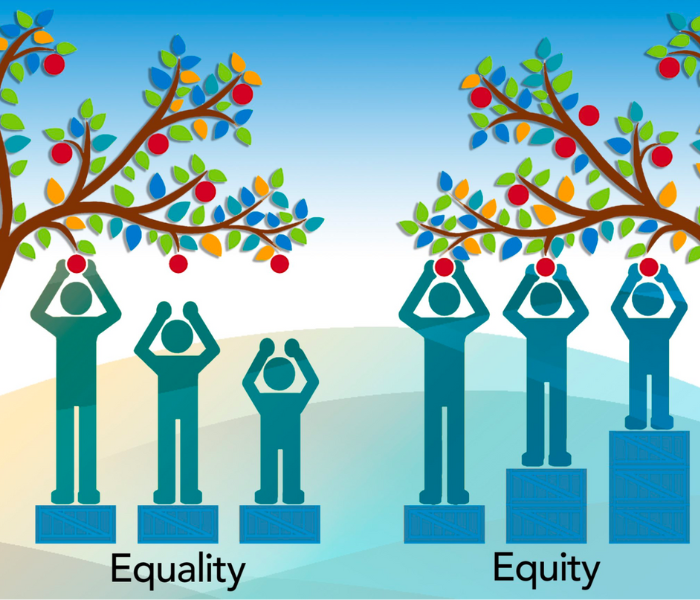Strategic Planning & Development to Improve Community Health Outcomes
Strategic Planning
At Ascendant Healthcare Partners, we specialize in strategic planning services aimed at improving community health outcomes through meticulous planning and evaluation. We offer insights and comprehensive services to develop various health-related community needs assessments, health improvement plans, and health equity plans affiliated with a community engagement workshop.
Strategic planning is a meticulous process aimed at charting the course for a community’s future health outcomes, typically spanning a year or more. A strategic plan encompasses assessing desired objectives and establishing metrics to gauge success. It is typically completed by a health department for internal use—essentially, this is work the health department does on itself. It’s their “oxygen mask” for themselves; before any health department can start work on the community, a Strategic Plan should be developed.

During this time, key health priorities are identified, and we collaborate with those local health departments to develop actionable items within the Strategic Plan and Health Equity Plan (HEP). These plans outline specific strategies and interventions to address the identified health needs and promote equity within the community.
The Public Health Department Accreditation Program (PHAB) is a national program that provides resources and consulting to ensure that all health departments meet and exceed the accreditation guidelines. The program is designed to support local health department accreditation across the United States, and Ascendant Healthcare Partners is fully aligned with those standards and measures.
It is our foremost belief that community health is a shared responsibility. As such, we continuously facilitate meaningful participation and dialogue within the communities we serve. Our services are carefully designed to empower your local health department with the tools, insights, and strategies necessary for sustainable health improvement. Our foremost goal is to build a more resilient community through collaboration and informed action.

Health Equity Plan
Our approach emphasizes equity by designing comprehensive strategies to address disparities and ensure equitable access to healthcare services. We develop S.M.A.R.T. objectives and follow PHAB guidance to identify and address disparities within the community. These items include, but are not limited to, disability rates, veterans, poverty, race dispersion, and many others. Everyone needs to be seen, heard, and valued. These plans encompass several key elements:
- The Assessment of Disparities
- Priority Area Identification
- Strategies and Interventions
- Partnerships and Collaboration, and;
- Monitoring and Evaluation.
Our Health Equity Plans are guiding documents to inform decision-making, resource allocation, and policy. We collaborate with you to develop a comprehensive plan to address each issue.
Our Approach
Strategic Planning Framework – We employ a continuous improvement framework to identify community strengths, prioritize service gaps, and develop targeted interventions for sustainable health improvement. The Local Health Board’s Strategic Plan focuses on the expertise and contributions of the local health department’s ability to improve public health functions.
We continuously revise our programs and strategies based on feedback and evaluation data, making adjustments as needed to address core issues within the community health initiatives. This iterative process ensures that our interventions remain relevant and effective over time.
Our services are carefully designed to empower your local health department with the tools, insights, and strategies necessary for sustainable health improvement, with the ultimate goal of building a more resilient community through collaboration and informed action.
Ascendant Healthcare Partners adopts a holistic approach to strategic planning, focusing on community engagement, evidence-based analysis, and alignment with industry standards. The continuous process improvement framework works to identify community strengths and prioritize service gaps, needs, and barriers; develop and implement programs; collect process and outcomes data; and revise programs and strategies to address core issues within the community health initiative.
- Identifying Strengths and Gaps: We conduct thorough assessments to identify community strengths and opportunities, prioritizing service gaps, needs, and barriers. This helps us understand resources available within the community as well as areas where additional support is needed.
- Program Development and Implementation: Based on our needs assessment plans, we develop and implement programs and initiatives designed to address previously identified health priorities. These programs are tailored to the community’s specific needs and demographics, ensuring maximum impact.
- Community Engagement: We facilitate engagement meetings to address health priorities and leverage community strengths in overcoming challenges related to poverty, social barriers, access to services, and lifestyle factors.
- Data-Driven Analysis: Our strategies are informed by the Social Determinants of Health (SDoH) framework and aligned with Healthy People 2030 goals and objectives. They are used for analysis in the development of all evaluation and planning engagements developed by Ascendant Healthcare Partners.
- Alignment with Standards: Our services are aligned with industry standards, including Public Health Accreditation Board (PHAB) standards & measures, ensuring quality and accountability in every phase of planning and evaluation. This is our community assessment guide.
- Clear Reporting and Support: We provide clear, well-cited reports and supporting materials that are easily deployable, along with ongoing support and assistance tailored to each community’s unique needs.

We meet your community where you are.
We are here to help you achieve your goals whether through training or full-service offerings.
FAQ
Health equity is the principle of ensuring everyone has the opportunity to attain their highest level of health, regardless of social or economic circumstances, by addressing systemic barriers and disparities in access to healthcare and resources.
Health equity is a problem due to persistent disparities in health outcomes among different population groups, stemming from systemic injustices and inequities in access to healthcare, education, employment, and other social and economic resources.
An organizational strategic plan provides a local health department (LHD) and its stakeholders with a clear picture of where it is headed, what it plans to achieve, the methods by which it will succeed, and the measures to monitor progress. It is a leadership tool grounded in the organization’s decisions about strategic priorities for the near future (usually the next three to five years). The Strategic Plan communicates these priorities and provides a basis for future decision-making.
The Public Health Strategic Plan defines for county residents, partnering agencies, and organizations and states where your agency is headed, what we plan to achieve, how we will succeed, and how we will monitor and measure progress.
The Board of Health (or other funding body) will use the Strategic Plan to guide the County Public Health from being a “good” health department to becoming a “great” health department, as defined by our Pillars of Excellence.
Clear Direction and Objectives: Ascendant Health Partners’ strategic planning provides local health departments (LHDs) with a clear roadmap for future endeavors. This includes a defined vision, mission, core values, and specific goals to enhance community health outcomes.
Methods and Approaches: Our strategic plans meticulously outline the methods and approaches LHDs will employ to meet their objectives. These encompass various factors, including population health, disease prevention, health promotion, and ensuring health equity. LHDs may prioritize areas such as chronic disease management, emergency preparedness, and health education.
Engagement with Stakeholders: Ascendant Health Partners recognizes the importance of engaging stakeholders in the strategic planning process. This involves collaboration with community members, local organizations, and various partners, including community-based organizations, schools, businesses, and faith-based groups.
Monitoring and Evaluation: Our strategic plans incorporate robust measures for monitoring progress towards goals. This facilitates accountability and enables timely adjustments as needed. LHDs assess their impact on community health through rigorous data collection, evaluation, and transparent reporting.
Integration with Other Initiatives: Ascendant Health Partners’ strategic planning is integrated with other critical processes, including local community health improvement initiatives, agency quality improvement (QI) plans, operational/work plans, and annual reports. This ensures alignment and maximizes the effectiveness of LHD efforts.
Incorporating Key Elements: Part of our strategic planning process involves integrating the five pillars of health: prevention, promotion, protection, partnership, and policy. Additionally, we employ SWOT (Strengths, Weaknesses, Opportunities, Threats) analysis to comprehensively assess the landscape and optimize strategic decision-making for LHDs.
A Health Equity Plan (HEP) is a strategic framework designed to address health disparities and promote equitable access to community healthcare services and resources. It is crucial to ensure that all individuals, regardless of background or circumstance, have the opportunity to attain their highest level of health.
A Health Equity Plan offers several benefits to communities:
- Reduction of Health Disparities: By targeting the root causes of health disparities, such as socioeconomic factors, systemic discrimination, and access barriers, HEPs work to narrow the health gap between different population groups within a community.
- Improved Health Outcomes: Through targeted interventions and initiatives, HEPs aim to improve health outcomes for vulnerable populations, leading to better overall health and well-being across the community.
- Enhanced Access to Healthcare: HEPs prioritize equitable access to healthcare services and resources, ensuring that all community members have the opportunity to receive timely and appropriate care, regardless of their socioeconomic status or background.
- Community Empowerment: By engaging community members in the development and implementation of HEPs, these plans empower individuals to take an active role in improving their own health and the health of their community.
- Stronger Social Cohesion: HEPs foster collaboration and partnerships among various stakeholders, including healthcare providers, government agencies, community-based organizations, and residents. This collaboration strengthens social cohesion and solidarity within communities, leading to more inclusive and supportive environments for all.
In summary, Health Equity Plans play a vital role in advancing health equity goals, reducing disparities, and promoting communities’ overall health and well-being. They represent a proactive and comprehensive approach to addressing the complex factors contributing to health outcomes inequities.




